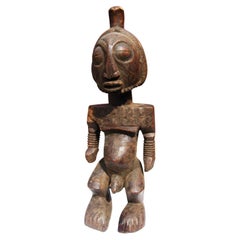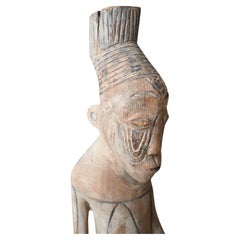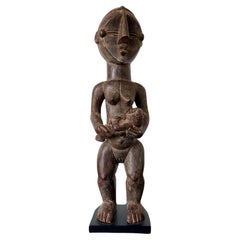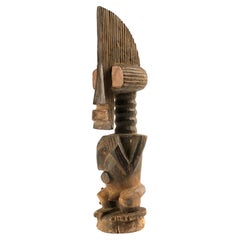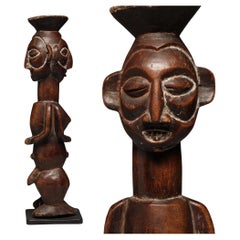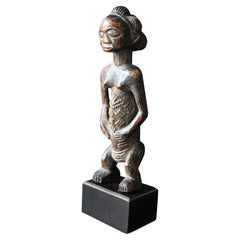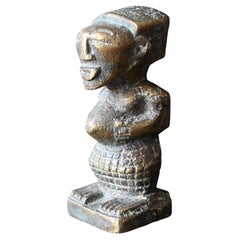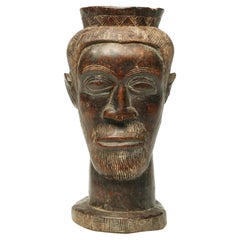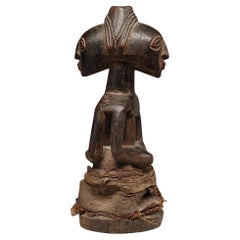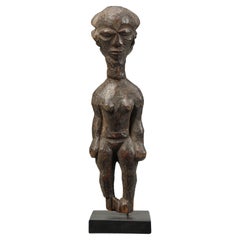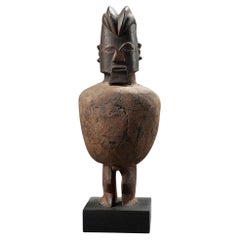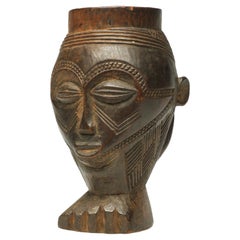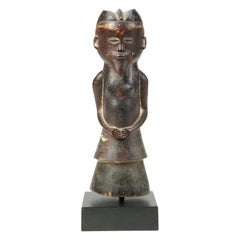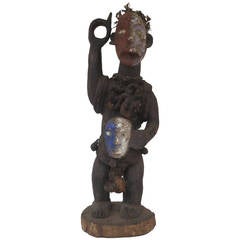Congo Figure
Mid-20th Century Congolese Tribal Tribal Art
Wood
Early 20th Century Congolese Tribal Tribal Art
Wood
Mid-20th Century Congolese Tribal Figurative Sculptures
Wood
Late 20th Century Congolese Tribal Tribal Art
Metal
Mid-20th Century Congolese Tribal Tribal Art
Wood
Early 20th Century Congolese Tribal Tribal Art
Wood
Mid-20th Century Congolese Tribal Tribal Art
Brass
Early 20th Century Congolese Tribal Tribal Art
Wood
Mid-20th Century Congolese Tribal Tribal Art
Wood
Mid-20th Century Congolese Tribal Tribal Art
Organic Material, Wood
Early 20th Century Congolese Tribal Tribal Art
Wood
Early 20th Century Congolese Tribal Tribal Art
Wood
Early 20th Century Congolese Tribal Tribal Art
Wood
Early 20th Century Congolese Tribal Art
Metal
20th Century Congolese Primitive Tribal Art
Wood
Antique 19th Century Congolese Tribal Art
Wood
Mid-20th Century Congolese Tribal Tribal Art
Wood
20th Century Congolese Tribal Art
Wood
20th Century Congolese Figurative Sculptures
Terracotta
Early 20th Century Congolese Tribal Tribal Art
Wood
20th Century Congolese Tribal Art
Wood
20th Century Congolese Sculptures and Carvings
Wood
Early 20th Century Congolese Tribal Tribal Art
Wood
Antique 19th Century Congolese Figurative Sculptures
Terracotta
Mid-20th Century Congolese Tribal Tribal Art
Wood
Recent Sales
Early 20th Century Congolese Tribal Tribal Art
Wood
20th Century Congolese Tribal Art
Feathers, Raffia, Wood
Antique Late 19th Century Congolese Tribal Art
Textile, Natural Fiber, Wood, Beads
Early 20th Century Congolese Tribal Art
Wood
Vintage 1930s Congolese Tribal Art
Wood
20th Century Congolese Tribal Art
Raffia, Wood
20th Century Congolese Tribal Figurative Sculptures
Metal
Early 20th Century Congolese Tribal Tribal Art
Wood
Early 20th Century Congolese Figurative Sculptures
Terracotta
Vintage 1950s Congolese Folk Art Tribal Art
Wood
Early 20th Century Congolese Tribal Art
20th Century Congolese Sculptures and Carvings
Brass
20th Century Congolese Tribal Art
Wood
Early 20th Century Congolese Tribal Tribal Art
Wood
Early 20th Century Congolese Tribal Art
Hardwood
Early 20th Century Congolese Tribal Tribal Art
Wood
Early 20th Century Congolese Tribal Tribal Art
Wood
Mid-20th Century Congolese Tribal Tribal Art
Wood
20th Century Congolese Folk Art Sculptures
Animal Skin, Wood
Mid-20th Century Congolese Tribal Tribal Art
Metal
Mid-20th Century Congolese Figurative Sculptures
Wood
Early 20th Century Congolese Tribal Tribal Art
Wood
Early 20th Century Congolese Tribal Art
Wood, Horn, Hide
20th Century Congolese Tribal Art
Wood
20th Century Congolese Tribal Art
Wood
Early 20th Century Congolese Tribal Art
Wood
20th Century Congolese Tribal Art
Vintage 1970s Congolese Organic Modern Figurative Sculptures
Bronze
Early 20th Century Congolese Tribal Tribal Art
Wood
People Also Browsed
2010s British Scandinavian Modern Club Chairs
Sheepskin, Beech
2010s American Table Lamps
Brass
21st Century and Contemporary Mexican Mid-Century Modern Table Lamps
Wood, Fabric, Linen, Fiberglass
2010s Italian Modern Chandeliers and Pendants
Metal, Brass
21st Century and Contemporary Italian Art Deco Wall Lights and Sconces
Brass
20th Century Gabonese Tribal Wall-mounted Sculptures
Wood
20th Century French Baroque Dining Room Chairs
Brass
21st Century and Contemporary Moroccan Natural Specimens
Stone
Antique 15th Century and Earlier African Natural Specimens
Bone
21st Century and Contemporary Mexican Mid-Century Modern Floor Lamps
Textile, Wood, Linen, Fiberglass
21st Century and Contemporary Finnish Mid-Century Modern Floor Lamps
Brass
Antique Late 19th Century French Empire Revival Wardrobes and Armoires
Marble, Carrara Marble, Ormolu
Antique Late 19th Century Chinese Late Victorian Coffee and Cocktail Tables
Hardwood
2010s American Mid-Century Modern Table Lamps
Brass
Vintage 1930s Swedish Scandinavian Modern Table Lamps
Brass
Mid-20th Century Nigerian Tribal Masks
Wood
Congo Figure For Sale on 1stDibs
How Much is a Congo Figure?
Finding the Right Folk Art for You
Folk art refers to a genre of art that shares the creator’s traditions, offering not just an artistic display but an opportunity to learn about a culture. Vintage, new and antique folk art typically reflects a heritage or location. It can include utilitarian objects and handmade art as diverse as weather vanes, portraiture and paintings, carnival art, quilts and duck decoys.
American folk art is frequently valued because of the traditional skills involved, like weaving, hand-carving wood and even stonework. Many folk artists are self-taught, while some train as apprentices within their community. By using available materials and taking a personal approach to their creations, artists ensure each piece is unique and conveys a story. Native American folk art includes functional objects reflecting their heritage, such as baskets, textiles and wooden pieces.
During the Great Depression, artistic materials in America were hard to come by, so artisans used discarded wood from cigar boxes and shipping crates to make highly stylized, notched pieces — most often picture frames and boxes — that are today sought after by collectors. This folk art style is called tramp art and was popular from roughly 1870 until the 1940s.
Folk art brings vibrant culture and traditions into your home. Browse an extensive collection of folk art on 1stDibs.
Read More
A Giant Wedding Cake Has Us Looking at Portuguese Tiles in a New Light
At Waddesdon Manor, artist Joana Vasconcelos has installed a three-tiered patisserie inspired by the narrative tile work of her homeland. We take a look at the cake sculpture and how Portuguese tiles have been used in architecture from the 17th century to today.
Why Jules Chéret Was the King of the Modern Poster
The streets of fin-de-siècle Paris were set aglow with colorful poster ads, thanks to the printing techniques invented by Jules Chéret. Now, the Milwaukee Art Museum is celebrating this undersung talent in America's first solo show dedicated his exuberant works.
Why the American Flag Has Had So Many Different Star Patterns
Expert Jeff Bridgman explains the history and meaning behind the twinkling constellations that have graced Old Glory.
Peggy Guggenheim Loved Modernism, but She Also Collected Tribal Art
The iconoclastic style setter displayed African and Oceanic art, as well as works by indigenous peoples of the Americas, alongside pieces by such major modernists as Pablo Picasso and Jackson Pollock.
The 13-Star American Flag Had More Variations Than You’d Think
Perfect for July 4th weekend, a new show at Philadelphia's Museum of the American Revolution displays an array of antique red, white and blue flags.
Tramp Art, America’s Most Misunderstood Art Form, Is Trending in Interiors
Designers are beginning to see this enigmatic form of folk art in a whole new light.
